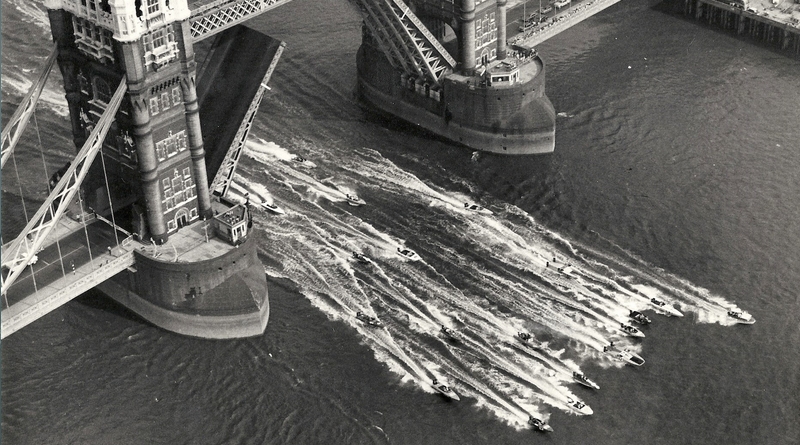I have always been a huge fan of Offshore Class 3 racing.
Whilst chatting with Kerry Bobin recently, who oversaw his son Jack’s UIM Class 3A World Championship win in Norway last year, he asked me, ‘What are the chances of Ray Bulman writing an article about the history of the Class’?
‘He was there from Day One’.
I rang the 87 year old journalist / Bon Viveur, ‘How much is he going to pay me? My state pension isn’t covering the cost of my Mobility Scooter’!
With thanks to the oldest powerboat racing journalist on the Planet, Ray Bulman and Kerry Bobin for putting this project together, here is part 1 of the article.
It began almost as a joke.
 It was early in 1962 that the late Geoff Tobert (left) wagered boat builder Clive Curtis (Co-Founder of Cougar Marine and father of 8 time World UIM Class One Champion Steve Curtis), he could drive an outboard powered runabout from London’s Putney to Calais in France and back in the fastest time.
It was early in 1962 that the late Geoff Tobert (left) wagered boat builder Clive Curtis (Co-Founder of Cougar Marine and father of 8 time World UIM Class One Champion Steve Curtis), he could drive an outboard powered runabout from London’s Putney to Calais in France and back in the fastest time.
It was to be a wager that launched a sport.
 Both Tobert and Curtis (left) earned their living in the marine trade and as this was an era when waterskiing was extremely popular, the outboard runabout was in its heyday.
Both Tobert and Curtis (left) earned their living in the marine trade and as this was an era when waterskiing was extremely popular, the outboard runabout was in its heyday.
Both challengers sold this type of craft and it wasn’t long before other builders and dealers heard about this forthcoming cross-Channel contest and immediately became keen to prove their own products.
What was initially going to be a two-boat race eventually set off in June that year against 25 other contenders.
Lifejackets were only recommended, a bucket was suggested for bailing, sandwiches and something hot to drink in a Thermos flask was another idea but no one foresaw that anything not secured would be lost or smashed well before the fleet reached the open sea.
There wasn’t any form of rescue provided and all singled outboard powered craft had to carry a small additional outboard which could be attached on the stern in case of breakdown. Health and Safety laws were still years away.
A national powerboat authority didn’t exist.
The original Marine Motoring Association (MMA) had been wound up and the Royal Yachting Association (RYA) takeover was still almost two years away. Hence drivers’ licences would be a future expense meaning there was no costly liability insurance or fixture fees.

Another plus was that all the fuel was provided free of charge by the old Regent Oil Company.
With a return course of 260 miles it was the first ever event of its type to be held for such small power craft.
No one had any idea of the eventual outcome.
It would be very much every man for themselves (no women seemed interested in bouncing about in small boats in those days).
Of the motley fleet of 27 craft that drove down the Thames tideway to France only seven made it back to Putney. These were headed by Clive Curtis who finished eight minutes ahead of Geoff Tobert, both driving low deadrise Owens runabouts built in Britain under licence from Brunswick in America.

The event gained a great deal of publicity exposure particularly in the marine trade.
Many dealers felt such contests would provide the perfect platform to promote their waterskiing runabouts.
The end result was that several got together and launched the United Kingdom Outboard Boating Association (UKOBA) specifically to stage future events of this type.
The group had strict rules.
As its title suggested, all boats taking part would not only have to be outboard powered they must also be entered by ‘bona fide’ marine traders.

Part 2 will be published later this week.
Photo credits – mby.com / Ray Bulman / Chris Davies









